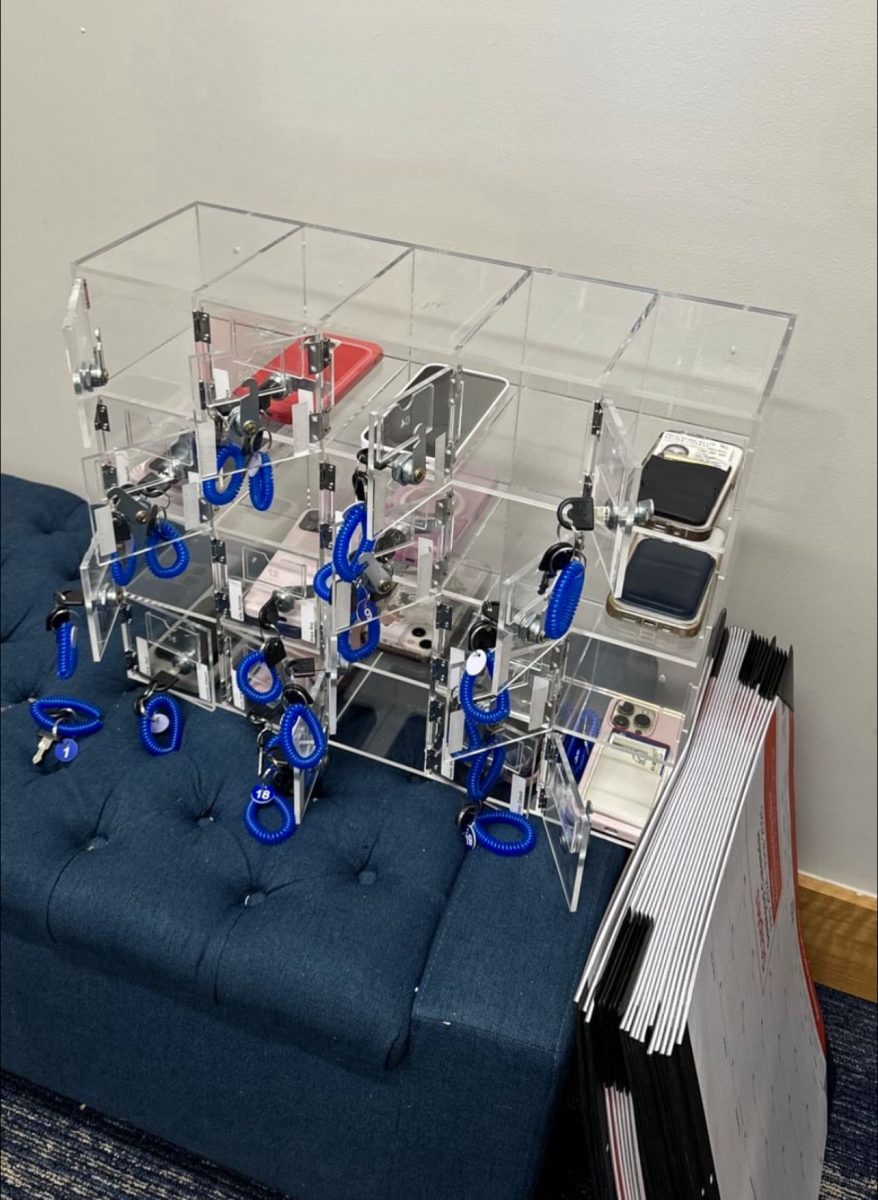The issue of cellphone bans is an emerging discussion amongst lawmakers and academic leaders across the United States and Europe. The digitization of schools has been happening rapidly with the widespread usage of laptops in the classroom and a new generation of students who have grown up interconnected with technology. However, the permittance of technology, specifically smartphones, has potentially gone too far. A PEW research study found that 72% of high school teachers report students being distracted by phones is a major problem. Being a student who grew up during the early stages of digitization, I don’t find it hard to believe that smartphones are a significant distraction while learning. I agree that a form of smartphone limitation is necessary, but an all encompassing ban is not the solution.
Across the United States, at least seven states have implemented bans on smartphones, and 14 more have introduced similar legislation indicative of the growing trend to remove personal technology from the classroom. An all encompassing ban on the use of smartphones has sparked serious debate, especially among parents, over whether it prevents students from remaining in contact with family during the school day. These concerns are justified considering the precarious increase in school shootings over the last two decades, with over “338,000 students in the US having experienced gun violence at school.” Given the uncertainty regarding students’ safety in school buildings, parents want to remain in contact with their children throughout the day, especially in the event of an emergency. Instituting a complete ban only angers and worries parents while also inhibiting students from being able to freely contact their parents for personal or emergencies related to gun violence.
However, various limitations and restrictions on smartphone use in the classroom must be implemented to improve the overall learning and social environment that has struggled to recover since COVID-19. Restricting smartphone usage in the classroom would potentially lower cyberbullying that occurs during school hours, an issue that nine out of 10 public schools report occurs during the school year to students. Limiting smartphone access and encouraging interpersonal socialization has been proven to have a .25 to .35 standard deviation decline within two to four years. While these numbers may seem marginal, they correspond to roughly a 46% reduction in bullying among students after implementing smartphone restrictions. These statistics cannot be ignored, as a digitized society has seen a more socially anxious youth population, and smartphone restrictions within schools could be one potential solution to aiding youth mental health.
There is little concrete data that directly correlates smartphone restrictions with improved academic achievement, but some patterns of correlation have been found. Multiple studies have found that smartphone restrictions tend to improve outcomes for low-achieving students and have negligible effects on high-achieving students. Low-achieving students are more susceptible to distractions while learning, and easy access to a smartphone is certainly a distraction. The role of schools is to uplift all students to reach their highest academic potential, and if there is an external stimulant that is potentially inhibiting a large sector of students from their optimal learning environment, then action must be taken. Placing restrictions on smartphone use also protects the integrity of teacher-student relationships, as it does not force teachers to implement their own restrictions or externalize frustration from teaching distracted students. When smartphone restrictions are implemented, they are usually easily enforceable, with over 56% of teachers claiming that these policies are at least somewhat easy to enforce because students are bound by school-wide policy rather than individual teacher exceptions.
The ultimate question becomes whether or not school smartphone restrictions have shown some initial positive results and provide a more conducive learning environment. However, parents have a right to stay connected with students during a school day. How can these two concerns be mediated? Simply, prohibitive restrictions must be implemented without removing a student’s ability to access their smartphone entirely. This can be achieved by implementing smartphone cubbies within individual classrooms and opening up periods where phone access is allowed. Smartphone cubbies remove smartphones from a student’s general vicinity, preventing distractions, but are easily accessible to students, so if an emergency were to occur, they could be made available. Loosening restrictions to create naturally integrated designated times when smartphones can be accessed, such as in between class periods or during the lunch period, allows students and parents to remain in contact throughout the school day. A compromise between smartphone bans and complete access to smartphones is necessary to create a learning environment conducive to teachers, students and parents. In a digitized world, completely removing smartphones from the classroom is no longer feasible, but placing limitations and promoting personal interaction amongst students is necessary to continue providing the best education to the future of the world.
Luca Amaturo, FCRH ’26, is a communications & media studies major from Marlboro, N.J.









































































































































































































